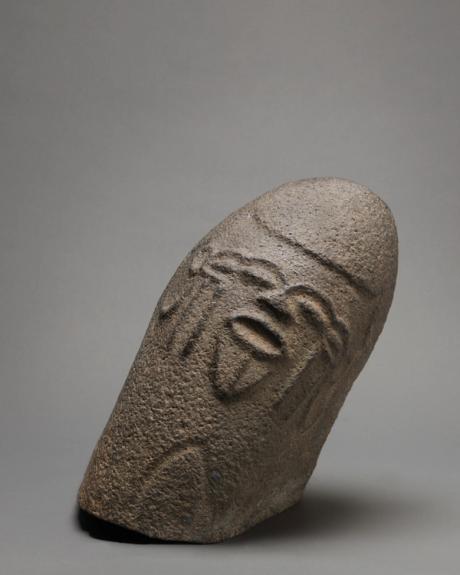
Decades after being looted in the village of Njemetop in southeastern Nigeria, an ancient basalt monolith has come home. Until last week, the human-looking stone work was held by the Chrysler Museum of Art in Norfolk, Virginia, which repatriated it to the Nigerian government. It is the first of the carved rocks known as the Bakor Monoliths, made between the 15th and 17th centuries – many of which were stolen in the 1960s and 1970s, during and after the Biafran War – to be returned to Nigeria .
The Chrysler Museum acquired the monolith in 2012 as a bequest from collectors Renée and Paul Mansheim, who bought it at an auction in Paris in 2005. for €4,200. “No issues were ever raised with the museum by anyone in Nigeria or by a previous owner – there were no complaints about it,” said Chrysler Museum Director Erik H. Neil. “We recognized, through scientific activity, that this was not something we wanted to cling to.”
The museum began investigating the monolith’s provenance after Christopher Slogar, a scholar of African art and professor at California State University, Fullerton, raised concerns after touring the collections last winter. The search revealed a photograph of the monolith in situ in Nigeria, taken in 1961 and published in 2022 in The Monoliths of Bakor, a book published by the nonprofit Factum Foundation for Digital Technology in Preservation of Cultural Heritage. A foreword by Abba Isa Tijani, Director General of the National Museums and Monuments Commission, notes that the monoliths are “representative of ancestors, associated with traditional spiritual and social practices in the forest belt of Cross River State, southeast Nigeria” and that the symbols that adorn them are probably an ancient form of writing.
“These exceptional carvings which remain one of Nigeria’s most unique art forms, have suffered from neglect, the effects of the increasing demand for land for agricultural use with its activities such as bush burning as well as excavation and illegal export,” writes Tijani. . “A number of these sculptures have found their way into museum collections in Europe and the United States.”
When the monolith entered the collection of the Chrysler Museum, it came with incomplete provenance information. “The details weren’t there,” Neil says. “The provenance of a lot of African material is not always clear, frankly, and dating can be very difficult.” Yet the museum had no reason to reject the work. “We felt it had been on the market, and it was a gift,” adds Neil. “It had sold out publicly a few years before and no issues had been raised about it.”
Once it became clear that the monolith should never have left Nigeria, the museum acted quickly to remedy the situation. Its board voted to dispose of the sculpture and staff began making arrangements for its return to the Nigerian government. On June 23, a repatriation ceremony was held at the Nigerian Embassy in Washington, DC.
Uzoma Emenike, Nigeria’s Ambassador to the United States, welcomed the stone’s return, saying in a press release that it “demonstrates respect for obligation and responsibility.” Indeed, this is an important step which has opened a new page in the history of [the] institution.”
To Neil’s knowledge, this is the first time the Chrysler Museum has repatriated an object, in part because it simply doesn’t have many works in its collection that might have a disputed heritage, he says. The museum was founded in 1933 with a core collection donated by Walter P. Chrysler Jr. which was greatly expanded by donations from regional patrons. “We don’t have a lot of material that’s in the more questionable areas,” says Neil. “So we don’t have a large African collection, we don’t have an abundance of Native American material.” When questions about provenance arise, the museum brings in outside specialists as consultants. “We don’t have some sort of budget that allows us to have a team of provenance researchers.” He adds that the museum could consider the possibility of devoting more resources to provenance but “it is more a question of being rigorous on the procedures”.
The monolith’s first stop in its home country is Abuja, where plans are underway for its display in a museum. Meanwhile, the Chrysler Museum has collaborated with the Factum Foundation to produce a resin facsimile of the stone, which the museum will use to educate visitors about cultural restitution.
A survey conducted in 1961 and 1962 and commissioned by the National Museum in Lagos documented 300 Bakor monoliths at 30 sites. During the destruction of the civil war, fought between 1967 and 1970, many were stolen and smuggled across the Cameroon-Nigeria border before entering the antiquities market. Several have ended up in the collections of museums around the world, including the British Museum, the Israel Museum, the Musée du Quai Branly and the New Orleans Museum of Art. The top half of a monolith is in the collection of the Metropolitan Museum of Artbequeathed in 1994 by the late Nina Bunshaft.
